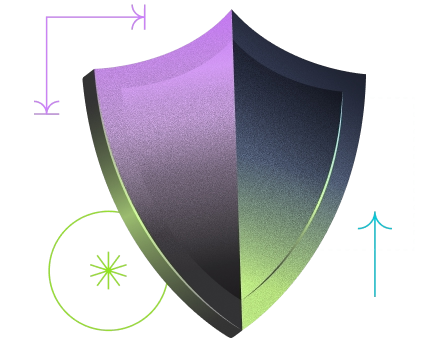In today's digital world, traditional paper contracts and wet signatures are rapidly being replaced by their electronic counterparts. But not all electronic signatures offer the same level of security and legal standing. The Qualified Electronic Signature (QES) represents the gold standard of electronic signatures, particularly within the European Union.
But what exactly is a QES signature, when do you need one, and how does it differ from other electronic signature types? This comprehensive guide will answer all your questions about this highest level of electronic signature.
What is a Qualified Electronic Signature (QES)?
A Qualified Electronic Signature (QES) is the most advanced and legally robust form of electronic signature available under EU regulations. Defined by the eIDAS Regulation (EU 910/2014), a QES provides the highest level of security and legal validity for digital transactions.
NB:
A QES is legally equivalent to a handwritten signature across all EU member states.
Technically speaking, a QES consists of three essential components:
- An advanced electronic signature
- A qualified certificate issued by a trusted provider
- Creation using a qualified signature creation device (QSCD)
This combination ensures maximum security and signer authentication, making it the most trusted electronic signature format for high-stakes or regulated transactions.
Try electronic signature for free for 14 days
The Legal Framework Behind QES
The Qualified Electronic Signature operates within a specific legal framework, primarily governed by the eIDAS Regulation in the European Union. This regulation establishes clear standards for electronic identification and trust services for electronic transactions.
Important:
Under eIDAS, a QES carries the same legal weight as a handwritten signature and cannot be denied legal admissibility solely because it's in electronic form.
Key legal aspects of QES include:
- Automatic recognition across all EU member states
- Clear requirements for qualified trust service providers
- Specific technical standards for security and identity verification
- Presumption of integrity and authenticity in legal proceedings
For businesses operating in regulated industries or conducting cross-border transactions within the EU, understanding this legal framework is essential for compliance and risk management.
QES vs. Other Types of Electronic Signatures
Not all electronic signatures offer the same level of security and legal validity. Understanding the differences is crucial for making informed decisions about which type to use for your documents.
Type | Security Level | Legal Strength | Recognition | Typical Use Cases |
|---|---|---|---|---|
Simple Electronic Signature (SES) | Basic | Low | Varies by country | Non-critical documents, internal approvals |
Advanced Electronic Signature (AES) | Medium | Medium | Widely accepted | Commercial contracts, HR documents |
Qualified Electronic Signature (QES) | High | Highest | Equal to handwritten in EU | Regulated industries, high-value transactions |
The difference between a regular electronic signature and a QES signature is significant. While basic electronic signatures can be as simple as a typed name or a digital image of a signature, a QES requires rigorous identity verification and uses specialized hardware or software to ensure maximum security.
For many everyday business transactions, a standard electronic signature or advanced electronic signature is sufficient. However, when legal certainty and maximum enforceability are required, a QES provides unparalleled protection.
The Technology Behind Qualified Electronic Signatures
A Qualified Electronic Signature relies on sophisticated technology to ensure its security and validity. Understanding this technology helps explain why a QES carries such high legal standing.
Qualified Signature Creation Devices (QSCD)
A QES must be created using a Qualified Signature Creation Device—a secure tool that creates electronic signatures while meeting rigorous security standards. These devices:
- Keep the signature creation data confidential
- Can be used only by the legitimate signer
- Protect against forgery and data tampering
- May be physical hardware (smart cards, USB tokens) or certified software solutions
Qualified Certificates
Every QES signature requires a qualified certificate issued by a Qualified Trust Service Provider (QTSP). These certificates:
- Securely link the signature to the signer's verified identity
- Contain specific information about the signer
- Are issued only after rigorous identity verification
- Must be issued by trust service providers that undergo regular audits and supervision
Cryptographic Protection
The QES utilizes advanced cryptography, typically including:
- Public Key Infrastructure (PKI)
- Hash functions to ensure document integrity
- Digital timestamps to prevent backdating
- Cryptographic validation processes
Good to know:
Unlike simpler electronic signatures, a QES creates a tamper-evident seal. Any alteration to the document after signing invalidates the signature.
When Do You Need a Qualified Electronic Signature?
While a QES offers the highest level of security and legal validity, it's not always necessary for every transaction. Understanding when to use a Qualified Electronic Signature helps optimize your document processes.
Legally Mandated Scenarios
In some cases, EU member states specifically require a QES for certain transactions. These typically include:
- Certain real estate transactions
- Some banking and financial services
- Specific medical and healthcare documents
- Select government submissions and public tenders
High-Value and High-Risk Transactions
Even when not legally mandated, a QES is often the preferred choice for:
- High-value contracts
- Cross-border transactions within the EU
- Transactions with heightened security concerns
- Documents likely to be scrutinized in legal proceedings
Industry-Specific Applications
Different industries benefit from QES in specific ways:
Legal Sector
Law firms and legal departments use QES for sensitive client documents, ensuring maximum enforceability and compliance with eSignature regulations. For instance, powers of attorney and certain court submissions often benefit from the added security of a QES signature.
Financial Services
Banks and financial institutions frequently require QES for loan agreements, account openings, and investment contracts. The finance industry's digital transformation increasingly relies on qualified signatures for compliance and security.
Healthcare
Patient consent forms, prescriptions, and medical records often use QES to ensure compliance with strict healthcare regulations while enabling digital workflows.
Public Sector
Government agencies increasingly accept or require QES for official submissions, tax filings, and public procurement processes.
How to Obtain a Qualified Electronic Signature
Implementing a QES solution requires working with certified providers and following specific steps:
1. Choose a Qualified Trust Service Provider (QTSP)
The first step is selecting a Qualified Trust Service Provider that appears on the EU Trust List. These providers have undergone rigorous certification processes and continuous supervision to ensure their services meet the strict requirements for issuing qualified certificates.
NB:
Always verify that your provider appears on the official EU Trust List before proceeding.
2. Complete Identity Verification
To obtain a QES, you must verify your identity through one of these methods:
- In-person verification at an authorized center
- Remote verification using video identification
- Electronic identification using an existing qualified electronic ID
This verification process is more rigorous than for standard electronic signatures, reflecting the higher legal standing of a QES signature.
3. Receive Your Qualified Certificate
After successful verification, the QTSP issues your qualified certificate, which contains:
- Your verified identity information
- The certificate's validity period
- The issuing QTSP's information
- A unique certificate identifier
4. Set Up Your Signing Method
Depending on your provider and needs, you'll use one of these methods to create your QES:
- Hardware device (smart card or USB token)
- Remote signing solution using a cloud-based QSCD
- Mobile application with built-in QSCD functionality
At Yousign (Youtrust), we offer streamlined solutions for Qualified Electronic Signatures that maintain compliance while providing an excellent user experience. Our secure electronic signature platform makes implementing QES straightforward for businesses of all sizes.
Benefits of Using QES for Your Business
Implementing Qualified Electronic Signatures offers numerous advantages:
Legal Certainty
The highest legal validity available for electronic signatures provides peace of mind for critical transactions and reduces legal risks.
Cross-Border Recognition
Automatic recognition throughout the EU simplifies international business operations and compliance across member states.
Enhanced Security
Advanced technical protections guard against fraud and tampering, increasing document security and integrity.
Trust and Professionalism
Using QES demonstrates commitment to security and regulatory compliance, enhancing your business reputation.
Digital Transformation
QES enables fully digital workflows even for highly regulated processes, supporting broader digital transformation initiatives.
Frequently Asked Questions About Qualified Electronic Signatures
What is a qualified electronic signature and how is it created?
A Qualified Electronic Signature is the highest level of electronic signature defined under EU regulation. It's created using a qualified certificate issued by a trust service provider and generated by a qualified signature creation device, ensuring maximum security and legal validity.
How does QES differ from a regular or advanced electronic signature?
While regular electronic signatures provide basic evidence of intent and advanced signatures offer better security features, only a QES is legally equivalent to a handwritten signature across the EU and provides the highest level of signer authentication and document integrity.
Is QES legally binding outside the EU?
QES is specifically defined under EU regulation, but many non-EU countries have similar concepts in their electronic signature laws. The legal recognition outside the EU depends on each country's specific legislation, though many recognize the high security standards of a QES signature.
Do I need special hardware or software to use QES?
Yes, a QES must be created using a qualified signature creation device, which can be physical hardware (like a smart card) or a validated software solution that meets strict security requirements. Your qualified trust service provider will guide you through the available options.
Who can issue a qualified certificate?
Only Qualified Trust Service Providers (QTSPs) that appear on the EU Trust List can issue the qualified certificates needed for a QES. These providers undergo regular audits and supervision to ensure compliance with eIDAS requirements.
Embracing Secure Digital Transactions with QES
As businesses continue to digitize their operations, understanding the role and benefits of Qualified Electronic Signatures becomes increasingly important. For transactions where legal certainty, security, and compliance are paramount, QES provides the optimal solution.
At Yousign, we're committed to making electronic signatures—including QES—accessible and user-friendly while maintaining the highest levels of security and compliance. Our platform supports all levels of electronic signatures, allowing you to choose the right option for each specific use case.
By implementing QES for your high-stakes documents, you can confidently complete fully digital workflows even in highly regulated industries, knowing that your signatures carry the same legal weight as their handwritten counterparts.
Ready to enhance your document security
with Qualified Electronic Signatures?








